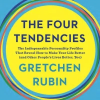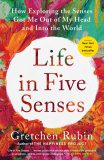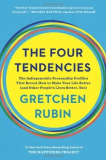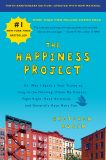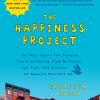In 1995, I had the most memorable job of my life. I spent a year clerking for Justice Sandra Day O’Connor, which meant that with three fellow clerks, I did writing, review, and analysis to help the Justice in her work. It was an extraordinary privilege to serve, in this small way, the operation of the Supreme Court.
I remember the first day I met the Justice, for my interview—she was friendly and easy to talk to, yet had an unmistakable air of command. (I was startled to learn that I should address her as “Justice,” as in “Thank you, Justice.” It seemed that every time we spoke to her, we invoked the Spirit of Justice, the virtue she was meant to uphold.)
During the year I served in the SO’C chambers, I saw for myself her determination, her openness to argument, her clarity, her impatience, her sense of humor.
After my clerkship ended, and even after I quit working as a lawyer to become a writer in New York City, Justice O’Connor and I kept in touch.
One day, the Justice called to tell me about iCivics, her initiative to give children a strong civics education. As we talked, I pictured her sitting in her chambers. With white marble, pediments, and Corinthian columns, the Supreme Court building looks like a Roman temple, but—quite incongruously, and with her typical independence—Justice O’Connor’s chambers held woven blankets, baskets, and cowboy sculptures to remind visitors of her beloved American Southwest.
We talked about her plans for iCivics, and why she believed it was so important for children to learn to become engaged citizens. Then she asked me what I was working on.
“I’m finishing up my book The Happiness Project,” I told her. “It’s an account of a year I spent test-driving theories about how to live a happier life—tackling areas like my energy, friendship, family, work, mindfulness, service, gratitude. All that.”
She said, “Well, I can tell you what I believe is the secret to a happy life.”
“What’s that, Justice?”
“Work worth doing.”
“Interesting,” I said, noting that this three-word response was typical of the Justice’s style—decisive, pragmatic, and brief. “But isn’t it somewhat…limited?”
“No,” she said firmly. “Work worth doing. That’s all you really need.”
“Hmmm,” I said. “I’ll think that over.”
For a long time, I wasn’t sure I agreed with her. What about relationships? Contemporary scientists and ancient philosophers agree that relationships are a key to happiness. And wasn’t the focus on “work” too narrow?
But now, with time and experience, I recognize the wisdom of her answer. “Work” can mean different things to different people, but no matter what form it takes, if we’re doing work worth doing, we’re spending our time and energy in a way that reflects our values.
Sandra Day O’Connor did work worth doing. She dedicated her life to the aim of good government: she served in all three branches; she was elected, appointed, and volunteered to serve in countless roles; she promoted the rule of law and judicial independence; she showed that “a young cowgirl from the Arizona desert” could make it to the Supreme Court.
Justice O’Connor’s personal qualities, as well as her professional qualities, helped her to succeed. She was analytical, tough, and practical, and she also believed in having fun at work. When she and her clerks came in on weekends, she’d often bring lunch for us all to share, we celebrated birthdays, we went fishing—I also attended her famous morning aerobics class, with our “Justice Never Rests” t-shirts.
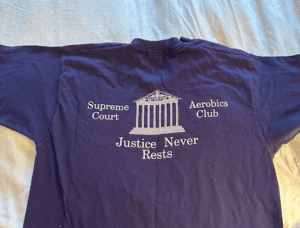
Much more importantly, her personal warmth served the Court. As a moderate conservative who often held the key vote in high-profile, contentious decisions, she was in a tough position, but her strong relationships with the other justices helped to hold the Court together and steer its course.
In 2018, when she announced her retirement from public life, she reflected on her career:
I’ve seen first-hand how vital it is for all citizens to understand our Constitution and unique system of government, and participate actively…working collaboratively…to solve problems, putting country and the common good above party and self-interest, and holding our key governmental institutions accountable.
In one paragraph, she summed up everything she’d striven to promote. The Constitution. Active participation. Collaboration. Putting the common good above party and self-interest. Accountability.
Work worth doing! What a happy life Sandra Day O’Connor led. Perhaps her death will remind us to recommit ourselves to the great American ideals she worked so hard to advance.

